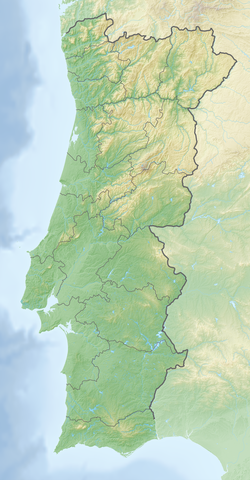| Montejunto Formation | |
|---|---|
| Stratigraphic range: Oxfordian | |
| Type | Geological formation |
| Underlies | Alcobaça Formation |
| Lithology | |
| Primary | Limestone |
| Other | Mudstone |
| Location | |
| Coordinates | 39°30′N9°12′W / 39.5°N 9.2°W |
| Approximate paleocoordinates | 33°42′N1°36′E / 33.7°N 1.6°E |
| Country | Portugal |
| Extent | Lusitanian Basin |
The Montejunto Formation is an Oxfordian geologic formation in Portugal. Dinosaur remains diagnostic to the genus level are among the fossils that have been recovered from the formation. [1]
